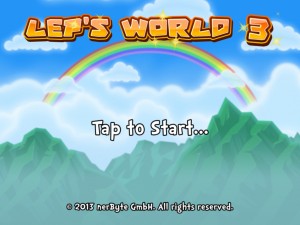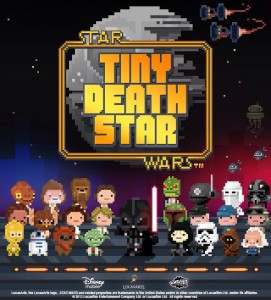

White Tile ~ Don’t Step On It! is a very Anglicized version of Don’t Step The White Tile, now out for the iPhone and iPad. You have three different game modes, each of which is more frustrating than the last, and your goal is simply to get the highest score that you can in any of the three modes. Read on for some tips and tricks for White Tile ~ Don’t Step On It!
Survival mode is one of the more unique game modes, and it moves automatically – however, it doesn’t move very smoothly, so you have to pay very close attention to the speed changes in this one in order to score highly. The speed quits increasing after about 60 steps, though, and the steps will move along at around 360 BPM, so all that you have to do is withstand the run as long as you can.
Time is where you have to hit 50 steps in the shortest amount of time possible. Distance is where you have to go as far as possible in thirty seconds. These both are where it gets tough. Luckily though, you will have three free missteps per round, and if you take the pop-up’s prompt to review the game (even if you don’t end up posting an actual review), you will get three more free missteps per round.
For these, the key (especially with the slightly jerky motion) is to keep a smooth rhythm when you tap. As you gain experience at White Tile ~ Don’t Step On It!, go with a faster rhythm in your head. Don’t pay attention to the score or the timer at the top of the screen, because they can be distracting.
However, if you can’t help yourself, use it to your advantage on the distance mode. Do your fastest tapping in the first 20 to 25 seconds of the round, and then slow down in the last bit of the round, because that is when it’s easiest to screw up and throw away your whole round.
When you start to get too frustrated at the game, take a break for about half an hour or so. When you come back more relaxed, you’ll be hitting the tiles faster without even trying. Play the game in spurts of time spent playing, followed by breaks, and you’ll get much faster, much more quickly.




 Thor: The Dark World – Top 10 tips, tricks, and cheats
Thor: The Dark World – Top 10 tips, tricks, and cheats Lep’s World 3: How to get more characters, power ups and new levels
Lep’s World 3: How to get more characters, power ups and new levels Moshling Rescue! – Quick Tips, Strategies, Cheats and Hints
Moshling Rescue! – Quick Tips, Strategies, Cheats and Hints Star Wars: Tiny Death Star – Tips and Tricks Guide: Hints, Cheats and Strategies
Star Wars: Tiny Death Star – Tips and Tricks Guide: Hints, Cheats and Strategies Football Heroes Tips and Tricks Guide: Hints, Cheats and Strategies
Football Heroes Tips and Tricks Guide: Hints, Cheats and Strategies